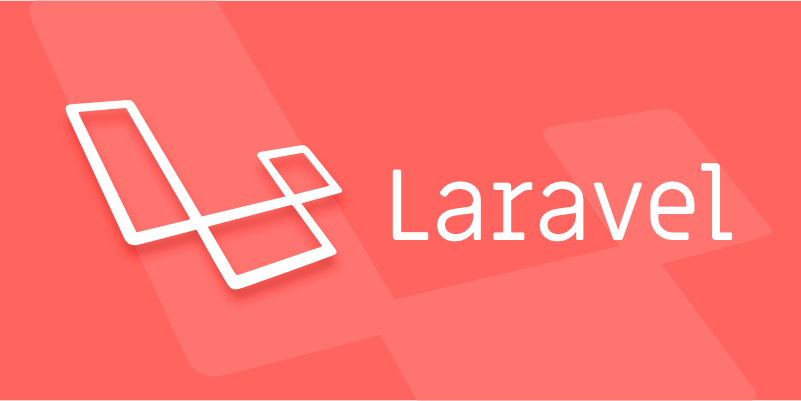Laravel's API resources are a built-in tool for converting and formatting data returned by API endpoints. 1. They act as a bridge between the Eloquent model and the JSON structure returned to the client. 2. It can control the exposed data and its structure to avoid leakage of sensitive information, and support custom field names, inclusion relationships and adding meta information. 3. Generate resource classes through the Artisan command, such as php artisan make:resource UserResource. 4. Use resource classes in the controller to return formatted data for a single or multiple model instances. 5. Define the return field in the toArray() method of the resource class, supporting conditional fields and relationship loading. 6. Suitable for scenarios where large APIs require consistent formatting, include conditional fields or relationships, and avoid duplicate logic, while simple APIs can be formatted manually. API resources make the code cleaner, easier to maintain and extensible.

In Laravel, API resources are a built-in way to transform and format the data you return from your API endpoints. They act as a bridge between your Eloquent models (or collections of models) and the JSON structure that gets sent back to the client. Instead of manually formatting your data in controllers, API resources give you a clean, organized way to define how your data should look in the API Response.

What Do API Resources Actually Do?
At their core, API resources let you control what data is exposed and how it's structured. This is especially useful when you want to avoid leaking sensitive data or when you need to customize field names, include relationships, or add meta information.
For example, if you have a User model and you want to return only the id , name , and email , you can define that in a resource. That way, even if your model has more fields, only those three get sent out in the API response.

How to Create and Use an API Resource
To get started, you can generate a resource using Artisan:
php artisan make:resource UserResource
This creates a new resource class in the app/Http/Resources directory. By default, Laravel includes a UserResource example if you used the make:resource command with that name.

Here's a basic example of how to use it in a controller:
use App\Http\Resources\UserResource;
use App\Models\User;
public function show(User $user)
{
return new UserResource($user);
} If you're returning a list of users, use the collection method:
use App\Http\Resources\UserResource;
public function index()
{
return UserResource::collection(User::all());
}This keeps your controller clean and separates the logic of how data is formatted from how it's fetched or stored.
Customizing the Output of a Resource
Inside your resource class, you'll find a toArray() method. This is where you define what data gets returned. Here's a simplified version of what a UserResource might look like:
public function toArray($request)
{
Return [
'id' => $this->id,
'name' => $this->name,
'email' => $this->email,
'created_at' => $this->created_at,
];
}You can also add conditional fields. For example, you might only want to return an API key if the user has one:
'api_key' => $this->when($this->api_key, $this->api_key),
Or include relationships:
'posts' => PostResource::collection($this->whenLoaded('posts')),
This makes it easy to build flexible, dynamic API responses without cluttering your controller logic.
When to Use API Resources vs. Manual Formatting
You don't have to use API resources. You could format your JSON manually using ->only() or ->makeHidden() on your models. But here's when resources really shine:
- You're building a large API with many endpoints
- You want consistent formatting across different responses
- You need to include conditional fields or relationships
- You want to avoid repeating formatting logic in multiple controllers
On the flip side, for very simple APIs or one-off endpoints, it might be overkill. In those cases, a quick return $user->only(['id', 'name']); might be good enough.
API resources are a powerful but straightforward tool in Laravel for managing how your data is presented through your API. Once you get the hang of them, they make your code cleaner, more maintainable, and easier to scale.
They're not magic — just a way to keep your formatting logic organized. And once you start using them regularly, you'll probably wonder how you ever built APIs without them.
Basically that's it.
The above is the detailed content of What are API resources in Laravel?. For more information, please follow other related articles on the PHP Chinese website!

Hot AI Tools

Undress AI Tool
Undress images for free

Undresser.AI Undress
AI-powered app for creating realistic nude photos

AI Clothes Remover
Online AI tool for removing clothes from photos.

Clothoff.io
AI clothes remover

Video Face Swap
Swap faces in any video effortlessly with our completely free AI face swap tool!

Hot Article

Hot Tools

Notepad++7.3.1
Easy-to-use and free code editor

SublimeText3 Chinese version
Chinese version, very easy to use

Zend Studio 13.0.1
Powerful PHP integrated development environment

Dreamweaver CS6
Visual web development tools

SublimeText3 Mac version
God-level code editing software (SublimeText3)

Hot Topics
 Creating Custom Validation Rules in a Laravel Project
Jul 04, 2025 am 01:03 AM
Creating Custom Validation Rules in a Laravel Project
Jul 04, 2025 am 01:03 AM
There are three ways to add custom validation rules in Laravel: using closures, Rule classes, and form requests. 1. Use closures to be suitable for lightweight verification, such as preventing the user name "admin"; 2. Create Rule classes (such as ValidUsernameRule) to make complex logic clearer and maintainable; 3. Integrate multiple rules in form requests and centrally manage verification logic. At the same time, you can set prompts through custom messages methods or incoming error message arrays to improve flexibility and maintainability.
 Adding multilingual support to a Laravel application
Jul 03, 2025 am 01:17 AM
Adding multilingual support to a Laravel application
Jul 03, 2025 am 01:17 AM
The core methods for Laravel applications to implement multilingual support include: setting language files, dynamic language switching, translation URL routing, and managing translation keys in Blade templates. First, organize the strings of each language in the corresponding folders (such as en, es, fr) in the /resources/lang directory, and define the translation content by returning the associative array; 2. Translate the key value through the \_\_() helper function call, and use App::setLocale() to combine session or routing parameters to realize language switching; 3. For translation URLs, paths can be defined for different languages ??through prefixed routing groups, or route alias in language files dynamically mapped; 4. Keep the translation keys concise and
 Working with pivot tables in Laravel Many-to-Many relationships
Jul 07, 2025 am 01:06 AM
Working with pivot tables in Laravel Many-to-Many relationships
Jul 07, 2025 am 01:06 AM
ToworkeffectivelywithpivottablesinLaravel,firstaccesspivotdatausingwithPivot()orwithTimestamps(),thenupdateentrieswithupdateExistingPivot(),managerelationshipsviadetach()andsync(),andusecustompivotmodelswhenneeded.1.UsewithPivot()toincludespecificcol
 Sending different types of notifications with Laravel
Jul 06, 2025 am 12:52 AM
Sending different types of notifications with Laravel
Jul 06, 2025 am 12:52 AM
Laravelprovidesacleanandflexiblewaytosendnotificationsviamultiplechannelslikeemail,SMS,in-appalerts,andpushnotifications.Youdefinenotificationchannelsinthevia()methodofanotificationclass,andimplementspecificmethodsliketoMail(),toDatabase(),ortoVonage
 Understanding and creating custom Service Providers in Laravel
Jul 03, 2025 am 01:35 AM
Understanding and creating custom Service Providers in Laravel
Jul 03, 2025 am 01:35 AM
ServiceProvider is the core mechanism used in the Laravel framework for registering services and initializing logic. You can create a custom ServiceProvider through the Artisan command; 1. The register method is used to bind services, register singletons, set aliases, etc., and other services that have not yet been loaded cannot be called; 2. The boot method runs after all services are registered and is used to register event listeners, view synthesizers, middleware and other logic that depends on other services; common uses include binding interfaces and implementations, registering Facades, loading configurations, registering command-line instructions and view components; it is recommended to centralize relevant bindings to a ServiceProvider to manage, and pay attention to registration
 Handling exceptions and logging errors in a Laravel application
Jul 02, 2025 pm 03:24 PM
Handling exceptions and logging errors in a Laravel application
Jul 02, 2025 pm 03:24 PM
The core methods for handling exceptions and recording errors in Laravel applications include: 1. Use the App\Exceptions\Handler class to centrally manage unhandled exceptions, and record or notify exception information through the report() method, such as sending Slack notifications; 2. Use Monolog to configure the log system, set the log level and output method in config/logging.php, and enable error and above level logs in production environment. At the same time, detailed exception information can be manually recorded in report() in combination with the context; 3. Customize the render() method to return a unified JSON format error response, improving the collaboration efficiency of the front and back end of the API. These steps are
 Strategies for optimizing Laravel application performance
Jul 09, 2025 am 03:00 AM
Strategies for optimizing Laravel application performance
Jul 09, 2025 am 03:00 AM
Laravel performance optimization can improve application efficiency through four core directions. 1. Use the cache mechanism to reduce duplicate queries, store infrequently changing data through Cache::remember() and other methods to reduce database access frequency; 2. Optimize database from the model to query statements, avoid N 1 queries, specifying field queries, adding indexes, paging processing and reading and writing separation, and reduce bottlenecks; 3. Use time-consuming operations such as email sending and file exporting to queue asynchronous processing, use Supervisor to manage workers and set up retry mechanisms; 4. Use middleware and service providers reasonably to avoid complex logic and unnecessary initialization code, and delay loading of services to improve startup efficiency.
 Understanding Dependency Injection in Laravel?
Jul 05, 2025 am 02:01 AM
Understanding Dependency Injection in Laravel?
Jul 05, 2025 am 02:01 AM
Dependency injection automatically handles class dependencies through service containers in Laravel without manual new objects. Its core is constructor injection and method injection, such as automatically passing in the Request instance in the controller. Laravel parses dependencies through type prompts and recursively creates the required objects. The binding interface and implementation can be used by the service provider to use the bind method, or singleton to bind a singleton. When using it, you need to ensure type prompts, avoid constructor complications, use context bindings with caution, and understand automatic parsing rules. Mastering these can improve code flexibility and maintenance.






